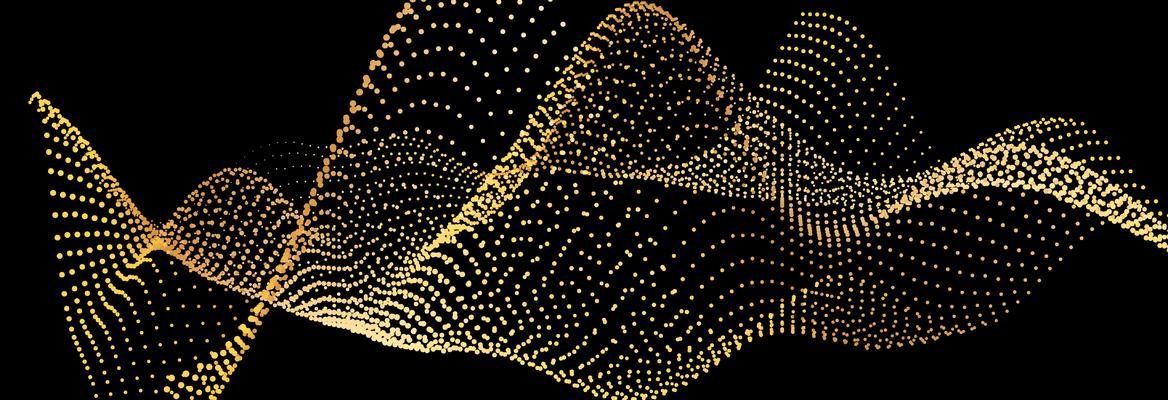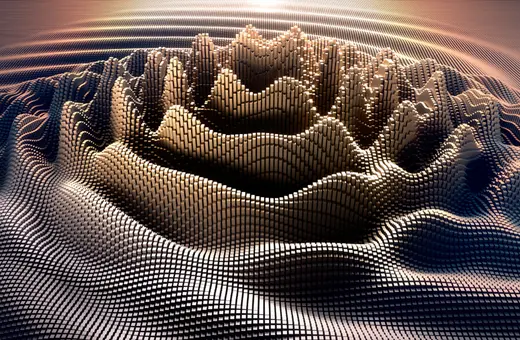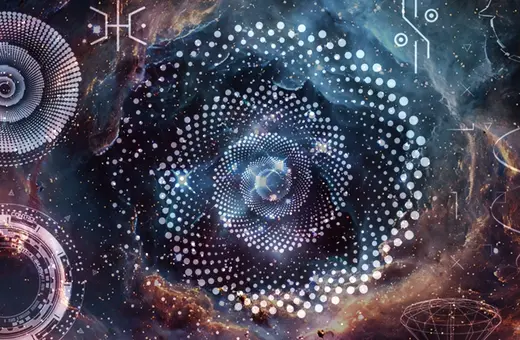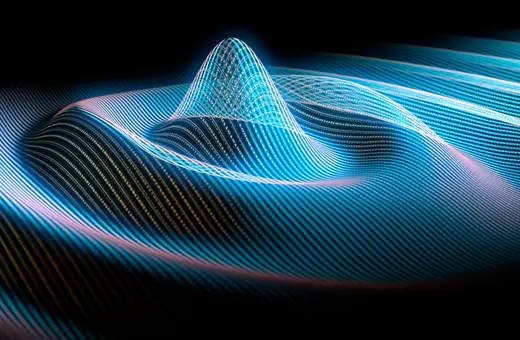In light of the recent criticisms of string theory, preeminent physicist Juan Maldacena sheds light on the promise of string theory and how it fits into our current understanding of the universe. In so doing, Maldacena also explains the ideas of holograms, dimensions, and quantum fields in terms everyone can understand.
For more featuring Juan Maldacena, join IAI LIVE: Fantasy, Faith and Physics this July 3rd. Sabine Hossenfelder, Max Tegmark, Michio Kaku, Juan Maldacena, Lisa Randall, and Mary-Jane Rubenstein debate the role of fantasy and unproven belief in modern physics. Book now.
Most people think that physics tells us that everything that exists is made out of particles, like atoms and quarks. Is that right?
Yes, indeed. The current picture of nature posits that all matter is composed of a few elementary particles. More accurately, the theory is that there are several fields that permeate spacetime. The excitations of these fields are quantized, and each elementary excitation quantum represents a particle. For example, the electromagnetic field's unit of excitation is the photon. There is another, the electron field, whose elementary excitation is the electron, and so forth. All electrons are identical because they are excitations of the same underlying field. While popular descriptions often talk about particles, our current foundational theory, the so-called “Standard Model,” relies significantly on the existence of fields.
And should we think of particles as simply very small bits of matter?
No, we should think of matter as being comprised of particles. Particles are the fundamental concept through which we describe matter. The core point is that particles are simpler than matter in general. Hence, we describe something more intricate, like matter, in terms of something simpler, namely, particles. To be more specific, as we mentioned earlier, all matter is formed from excitations of a few fields.
We think that the Standard Model is the long-distance manifestation of a deeper theory at shorter distances, but we do not yet know what that deeper theory is.
___
We think that the Standard Model is the long-distance manifestation of a deeper theory at shorter distances, but we do not yet know what that deeper theory is.
___
I don't believe that the idea of a dimension is abstract. It is actually very natural and has existed since the time of Euclid. Classical Greek geometry was about points, lines, and planes, which are geometric constructions of various dimensions. Adding time allows us to think in terms of "events" that happen at one time and one location in our three-dimensional space. Events are the fundamental "points" of spacetime.
What is certainly not obvious from our everyday experience is that observers moving relative to each other would perceive a different time. Even less obvious is the fact that these dimensions form a curved spacetime. This was the key insight that Einstein had when he developed general relativity.
In an interview with Closer to Truth, you mentioned that string theory posits that one string ultimately exists, and that the oscillation of that string in different, smaller dimensions generates everything from atoms to galaxies to human beings. What does this mean, exactly?
In the currently accepted "Standard Model," we recognize a few elementary fields. In string theory, the concept is that there is a single field with many components. Excitations of these fields behave like one-dimensional objects, like strings, rather than zero-dimensional particles.
 SUGGESTED READING
Reality's foundations lie beyond reason
By G. Anthony Bruno
SUGGESTED READING
Reality's foundations lie beyond reason
By G. Anthony Bruno





















Join the conversation